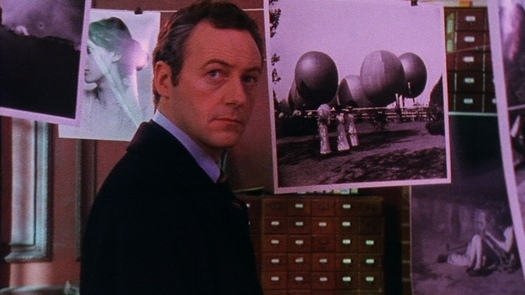
Liam Cunningham as Christopher Anderson in Shooting the Past, directed by Stephen Poliakoff, BBC, 1999
There are plenty of movies featuring photographers as protagonists, but fictional film stories where the photographic image plays a central and pivotal role are not so common. There is, for instance, the darkroom scene in Antonioni’s Blow-Up (1966), while another 1960s classic, the late Chris Marker’s La Jetée, is the most famous case of a film constructed almost entirely from still photographs, although the pictures were specially shot to tell the story rather than “found.” We might add, as a related celluloid meditation on the photographic image, the sequence in Godard’s Les Carabiniers (1963) where two soldiers unload and itemize the postcards in their suitcase, which I have mentioned here before.
Stephen Poliakoff’s three-part film for television, Shooting the Past, first transmitted by the BBC in 1999 and later shown on PBS’s Masterpiece Theatre, goes much further than any of these examples. If you love photography and you haven’t seen it, then this is a film you need in your life. For 194 minutes, Shooting the Past dwells on the often ineffable mystery, beauty and power of the static photograph. It’s a film that haunts the memory for years, and masterpiece is the right word.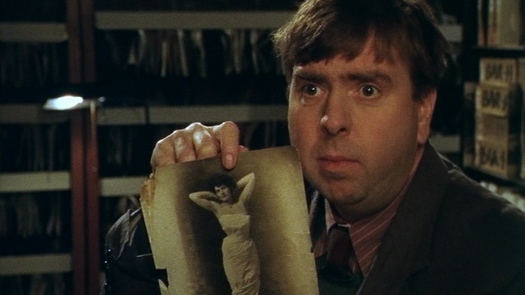
Timothy Spall as Oswald Bates in Shooting the Past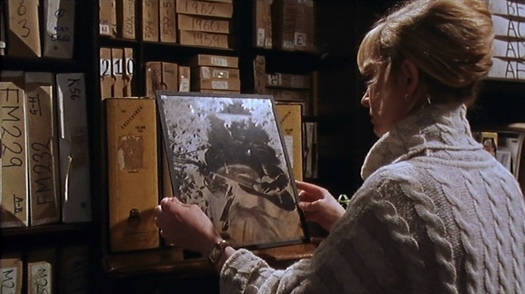 Lindsay Duncan as Marilyn Truman in Shooting the Past
Lindsay Duncan as Marilyn Truman in Shooting the Past
The story is set in the Fallon photo library, a fictitious institution on the outskirts of London modeled on the old Hulton Picture Library acquired by Getty in 1996 — Hulton Getty licensed more than 600 pictures for use in the film and supplied 14,000 prints and other kinds of photo-related ephemera as props. An American corporation has bought the building, a grand old country house, and plans to ditch the unwanted library and turn it into the American School of Business for the 21st Century. The company’s smooth professional manager, Christopher Anderson (Liam Cunningham), and his officious, laptop-carrying assistant, have arrived to oversee the development, which the library’s director, Marilyn Truman (Lindsay Duncan), claims to know nothing about; we discover why as the story unfolds.
Shooting the Past presents a clash of mentalities and ambitions that grows more poignant with every passing year: the multi-textured inner life of any cultured person versus the stark, unyielding imperatives of commercial interest. This magical archive of memories — and refuge — is staffed by a gang of eccentrics, none more otherworldly (at least on the surface, though underneath he’s a realist) than the curator Oswald Bates, a superbly pitched performance by Timothy Spall, who addresses the audience as puckish narrator. With total immersion in his task and staggering powers of recall, Bates can quickly locate a picture among the collection’s 10 million prints filed in boxes on the archive’s shelves. There isn’t a disk drive or monitor screen in the building. “I take it you’re computerized,” says Anderson. “It’s all in here,” replies Bates, tapping the database in his head. He knows that his time is up, that his encyclopedic knowledge, non-transferable expertise and economically superfluous passion are no longer required, and that he will never be employed in this way again, a fate that has befallen many people as new priorities and technologies inexorably supersede and annul earlier working practices.
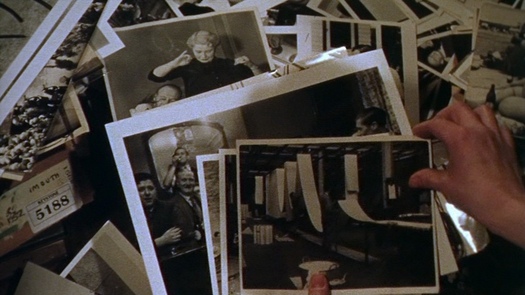
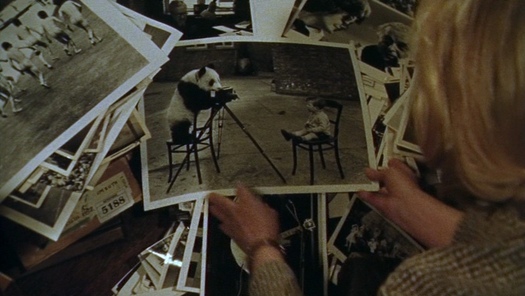
Marilyn Truman in the Fallon picture library. Panda picture by Bert Hardy, Picture Post, Getty Images, 1939
Poliakoff shoots in long scenes, though they never seem protracted or slow, and spends many minutes lingering on photographs in the library’s collection, some of them famous pictures. In the crepuscular warren of overflowing rooms that houses the collection, prints mounted on walls or hanging from strings frame the protagonists at every turn, as though the entire establishment has become an artist’s photo installation. There are numerous scenes where the characters sift through photos, show each other photos, and spend time simply gazing at their splendors. “Don’t say a single thing . . . just experience them.” Pictures piled upon pictures in a labyrinth of imagery and associations. Card index drawers, box files, light boxes, metal shelves. Anderson has barely arrived before his seduction by photographs begins. Bates asks him for his hometown and finds pictures of Emporia, Virginia within seconds, and even of the street where Anderson lived as a child. 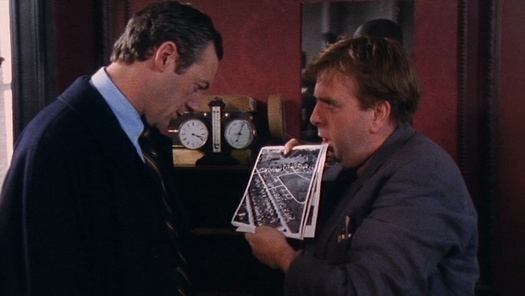
Oswald Bates shows Christopher Anderson a picture of Emporia, Virginia from the Fallon collection
In the course of Shooting the Past, we also see tantalizing glimpses of Edwardian erotic prints (highlighting the pervasive eroticism of so many of these pictorial disclosures and revelations); dreamlike photos of movie stars (Garbo, Dietrich, Bacall, Taylor, Loren); ominous photos of famous people who later killed themselves; and, on a trip to a London processing lab, a selection of ordinary people’s photos, some of whom, says Bates, will soon experience “uncertainty beyond their wildest dreams” — the sequence anticipates the next decade’s often digital fascination with discarded snapshots and found pictures from other people’s lives.
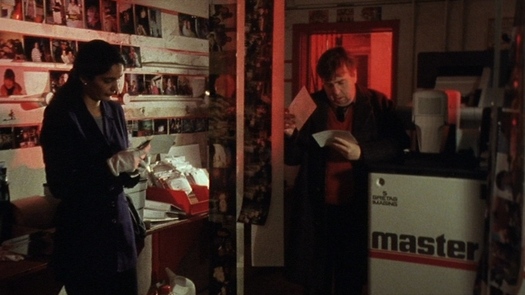
 Oswald Bates examines strangers’ photos at the processing lab
Oswald Bates examines strangers’ photos at the processing lab
There are two bravura sequences where Marilyn Truman attempts to convince Anderson of the value of the collection and make him change his plans by overwhelming him with previously concealed narratives pieced together through Bates’s remarkable visual memory and ability as a picture researcher. Each story is told entirely with photos, in the style of La Jetée, except that Shooting the Past mixes together real archival pictures, new photos shot to look like archival pictures, and Zelig-like montages made by inserting new elements into old pictures.
“All electronics off, please,” says Truman — an admonition aimed at the near future? “It’s important to watch closely.” In the first story, set in Berlin during the Second World War, Lily Katzman, a Jewish girl whose parents are in hiding, crosses the city with her father, an amateur photographer, to meet her mother in a park.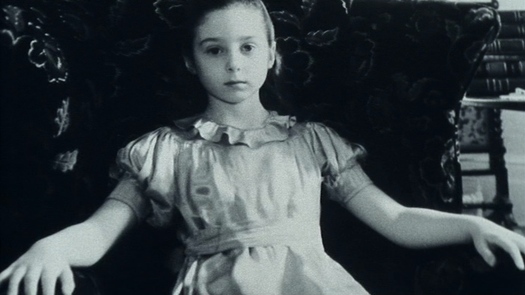
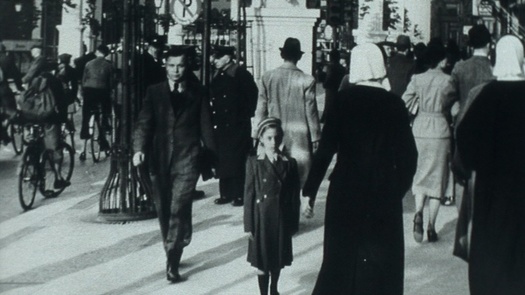
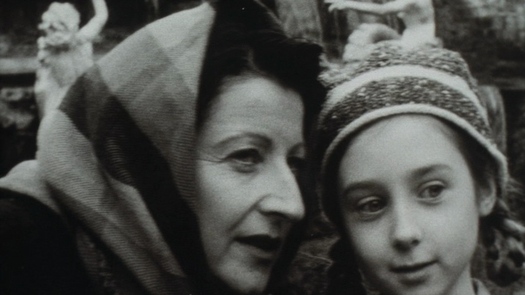

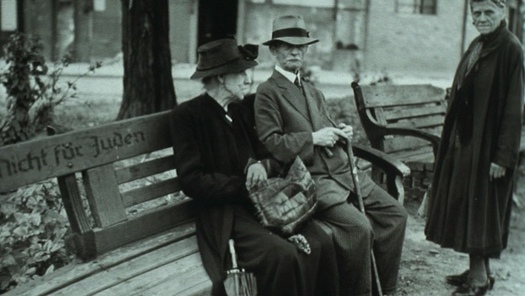
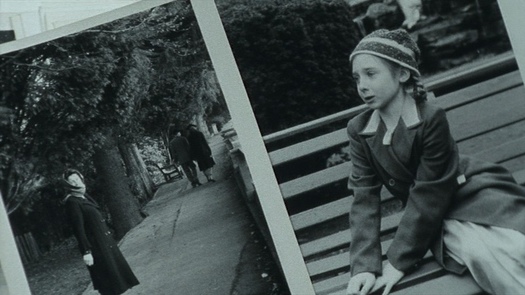
Pictures in the Fallon collection of Lily Katzman and her trek across Berlin to meet her mother
I won’t reveal this story-within-a-story’s troubling conclusion, though it’s not what one might fear, except to say that, aided by Adrian Johnston’s fine score, the outcome contrives, like much of the film, to be mournful, moving and yet somehow also uplifting. It says something for Poliakoff’s sensitivity as writer and director that he gets away here with Holocaust-derived subject matter that, by 1999, had come perilously close to overuse as a dramatic device. The point for Anderson is that he must confront both a natural capacity for empathy — he is clearly a nice guy — and a fascination with the library’s cavern of inexhaustible photographic revelation that his business concerns must oblige him to suspend to complete his mission. The conflict of motivations only makes the dilemma posed by the possible destruction and disposal of the picture collection more involving.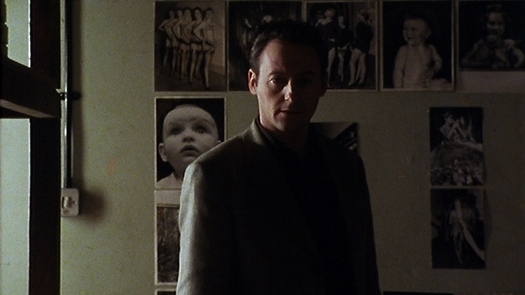

Chistopher Anderson’s sense of purpose and his detachment from the picture library begin to blur
The first time I watched Shooting the Past I had a small and delightful surprise. In the photographs of the park where Lily meets her mother, supposedly taken in Berlin, I recognized a fountain near where I live, west of London, consisting of marble statues of Venus and seven nymphs, which has absorbed me for years. More than 100 years old, it’s an enduringly peculiar and startling piece of work by an Italian sculptor. Over the decades, it has suffered vandalism and neglect and is now restored. I have photographed it myself several times. It was deeply satisfying to find this strange construction alchemized as a photographic prop in a masterly dramatic disquisition on photography’s capacity to enthrall that I don’t think I will ever tire of re-viewing.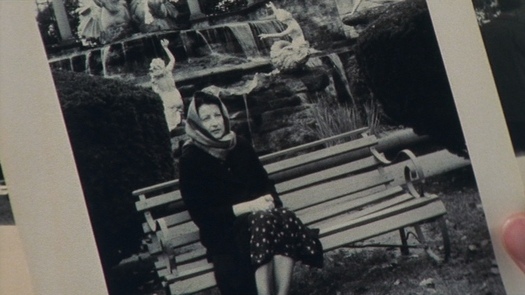 Lily Katzman’s mother in front of the “Berlin” fountain
Lily Katzman’s mother in front of the “Berlin” fountain
Shooting the Past is available in British and American releases.
